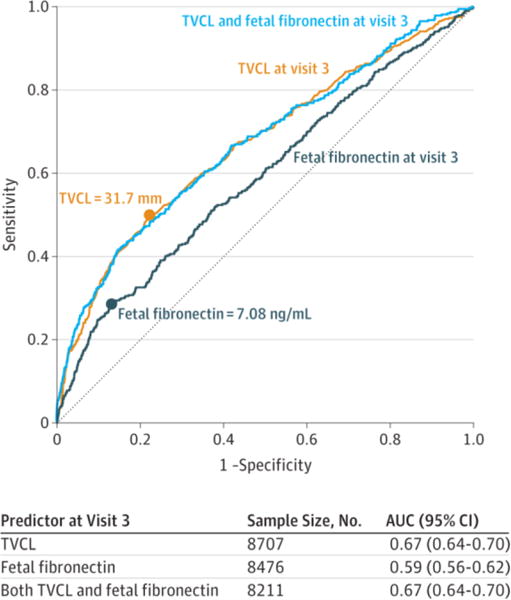Figure 2. Receiver Operating Characteristic Curves for Visit-3 Measures Predicting Spontaneous Preterm Birth at Less Than 37 Weeks’ Gestation.

Receiver operating characteristic (ROC) curves are shown for serial transvaginal ultrasound cervical length (TVCL), quantitative vaginal fetal fibronectin, and their combination through a logistic regression model in predicting spontaneous preterm birth at less than 37 weeks’ gestation. The ultrasound used for the cervical length measurement and the sample required for the fetal fibronectin assay were taken at Nulliparous Pregnancy Outcome Study: Monitoring Mothers-to-Be (nuMoM2b) visit 3, scheduled for 22 to 30 weeks’ gestation. The graph includes all women with the cervical length measurement for the cervical length curve; all women with fetal fibronectin data for the fetal fibronectin curve; and all women with both for the combined curve. Statistics below the graph correspond to the graph (all available data). Area under the ROC curve (AUC) statistics, restricted to the women with both measures (n = 8211), are 0.67 (95% CI, 0.64–0.71) for TVCL at visit 3; 0.58 (95% CI, 0.55–0.62) for vaginal fetal fibronectin level at visit 3; and 0.67 (95% CI, 0.64–0.70) for both TVCL and fetal fibronectin level at visit 3. The AUCs are significantly different for TVCL vs fetal fibronectin level, P < .001. The AUC combining TVCL and fetal fibronectin level is not significantly different from that for TVCL alone (P = .54). Sensitivity plus specificity is maximized at 31.7 mm for TVCL and 7.08 ng/mL for fetal fibronectin.
